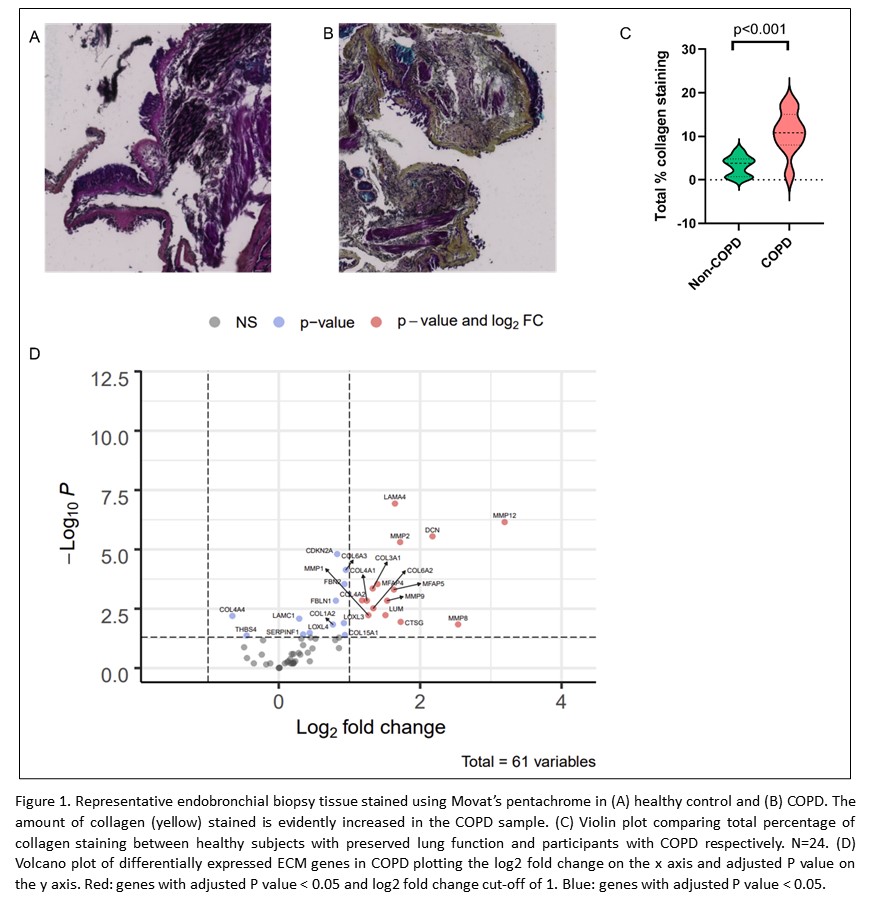Abstract
Introduction
In COPD, extracellular matrix (ECM) homeostasis is disrupted leading to abnormal connective tissue deposition and airflow obstruction. We aim to characterise ECM remodelling in COPD by investigating the changes in airway elastin and collagen and to correlate them to markers of lung function and computed tomography.
Methods
Bronchial biopsies from 12 patients with COPD and 12 healthy subjects were analysed using Movat?s pentachrome technique and the percentage of elastin and collagen as a fraction area of the total submucosa was measured. We also compared key ECM genes between subjects with COPD and healthy controls using RNA-sequence transcriptomic data of bronchial brushings.
Results
The total percentage of collagen staining was higher in COPD compared to healthy controls (10.8% (8.0-15.1) vs 3.8% (0.7-4.8), p<0.001). No difference between groups was appreciated in percentage staining for elastin. The total percentage of collagen staining was related to markers of airflow limitation including FEV1% (r=-0.43, p<0.05), FEV1/FVC (r=-0.63, p<0.01), MEF25-75% (r=-0.70, p<0.01) and E/I MLD (r=0.54, p<0.05). Upregulated genes observed in COPD include COL1A2, COL3A1, COL4A1, COL6A2 as well as MMP-1,-2,-8,-9 and -12 suggesting accelerated collagen turnover in disease (Fig 1).
Conclusion
These results suggest an important role of collagen composition in COPD and offer new opportunities for treatment by targeting the ECM pathology as a key player in airway remodelling.
